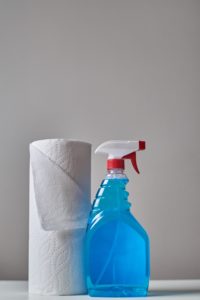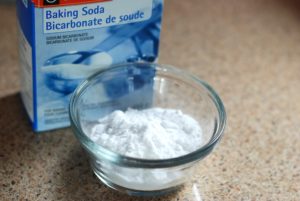How to Clean a Memory Foam Pillow

- Washing a memory foam pillow requires delicate handling to prevent damage, and regular cleaning is necessary for maintaining its hygienic condition.
- Spot cleaning and deodorizing methods are essential for addressing specific stains and odors on a memory foam pillow.
- Proper care instructions, including vacuuming and changing pillowcases regularly, contribute to maintaining the cleanliness and longevity of a memory foam pillow. Regular replacement, every 18 to 36 months, is also recommended for optimal support and hygiene.
We spend one-third of our lives with our faces pressed flush against our pillows. The cleanliness of this particular bedding is necessary for better skin health, sleep quality, and peace of mind.
Even though memory foam is one of the most supportive pillow materials available, it has a few drawbacks. A cheap memory foam pillow can sleep hot or smell unpleasant. And, no matter the quality, keeping a memory foam pillow can be difficult.
Throwing the soiled pillow into the washer isn’t an option. The washing machine will rip the delicate material to shreds. Placing it in the dryer will cause the filling to melt. So, we decided to do research and find the best way to wash a memory foam pillow.
Clean Your Memory Foam Pillow in 4 Easy Steps
As a general rule of thumb, you should wash a memory foam pillow once every two months. To do, follow the 4 easy steps below.
- Fill the sink or bathtub with lukewarm water. Pour a small amount of mild detergent in the tub. Some people like to add a sleep-promoting scent, like lavender.
- Put the pillow completely underwater, gently squeezing the foam to help lather the soap.
- The water should be dirty now, so drain the tub and refill with clean water. Repeat step 2. Do Step 2 and Step 3 again until the water runs clear.
- Air dry in the sun or outside. If you can’t do that, dry the pillow under a fan. We strongly discourage the use of a hairdryer, as the heat can melt the memory foam.
How to Clean Liquid Stains Off a Memory Foam Pillow
 Spilling a drink on your pillow is more common than you think. Chamomile tea spills can be a common occurrence; although liquids, like orange juice or grape juice, are much more difficult to remove.
Spilling a drink on your pillow is more common than you think. Chamomile tea spills can be a common occurrence; although liquids, like orange juice or grape juice, are much more difficult to remove.
- Remove the pillowcase and/or the protector. If the spill managed to go through those layers, throw both casings in the wash and set the pillow on a flat surface so you can work easily and quickly.
- Use a clean cloth or towel to absorb any excess liquid from the spill. Work quickly, as the longer the spill sets the harder it will be to clean.
- Mix a gentle detergent with lukewarm water until it reaches a bubbly consistency.
- Dip a sponge or damp cloth in the water, then rub the stain in a circular motion. Don’t scrub roughly. Remember that memory foam, for all its support, is a delicate material. If you clean the pillow too vigorously, the material can shred.
- After the stain has been removed, lightly press a dry and clean towel to the wet surface to soak up any excess moisture.
- Air drying is recommended after you have completed Steps 1 through 5. Since memory foam is a dense material, it needs to be dried quickly or it runs the risk of mold and mildew. Placing the pillow in direct sunlight or outside will help the material to dry faster.
If you are unable to do either, placing it under a fan can speed up the drying process.
How to Spot Clean Your Pillow
There are some spills and stains that need better cleaning than mere dabbing. Stains like grape juice, blood, or pet urine need a much more thorough cleaning.
Once again, it’s best to take care of stains while they are fresh and spot clean your pillow. Leaving a stain to deal with at a later time will make the job more laborious.
- Remove all the coverings.
- For blood and dark-colored beverages, pour 3% hydrogen peroxide directly onto the stain and dab at the surface with a clean towel. This step is complete when the peroxide stops bubbling.
- Fill a spray bottle with cold water and mist the surface of the stain.
- Lightly scrub at the stain until the surface is clean.
- Gently press a dry, clean towel to the stain to soak up as much moisture as possible.
- Dry in direct sunlight or under a fan.
4 Steps to Deodorizing a Memory Foam Pillow
 New memory foam pillows often come with an unpleasant off-gassing smell. It’s not necessarily nice to sleep with your head resting on the source of the odor. Sometimes it will sport other ghastly fragrances for unknown reasons.
New memory foam pillows often come with an unpleasant off-gassing smell. It’s not necessarily nice to sleep with your head resting on the source of the odor. Sometimes it will sport other ghastly fragrances for unknown reasons.
Below are the instructions to destroy these offensive smells. Although this isn’t a method of washing a memory foam pillow, it is a method of keeping your memory foam hygienic.
- Take off the pillowcase and lay the memory foam pillow on a flat surface.
- Sprinkle the pillow with baking soda. You can add a drop of lavender essential oil in the baking soda to give it a pleasant scent. Lavender helps you sleep better too.
- Leave the pillow in the sun for 2 to 3 hours. It’s important to let it sit for the allotted time to allow the baking soda to pull the odor from the material.
- Vacuum off the pillow with an upholstery attachment. This will remove the baking soda alongside dead skin cells and hairs on the surface.
General Care Instructions for a Memory Foam Pillow
One of the first actions you can take toward caring for your memory foam pillow is to read the manufacturer’s cleaning instructions. Ultimately, that guide is your best bet to washing a memory foam pillow.
In the event those instructions are not available to you, this guide will give you our best directions to cleaning a memory foam pillow. Before jumping in, here are some care tips to keep your pillow fresh between washes.
Vacuum the pillow surface once a week to lift dead skin cells, hair, and other foreign particles from the pillow. Vacuuming will ensure your pillow won’t transfer grim to a clean pillowcase.
Spot clean at least once a month to maintain the pillow’s cleanliness. Dirt builds up over time. A clean sleep environment will enhance your sleep and lead you to better health.
Change out the pillow casing, minimum, once a week. Like the last tip, changing out your pillowcase will support healthy, restful sleep.
During sleep, an individual sweats and exfoliates skin on to bedding. The pillowcase acts as a first line of defense.
Pillow protectors and covers should be washed once a month. If using a pillow protector to cover your memory foam pillow, we recommend you wash it at least once a month.
Pillow cleaning is best done on a warm day to speed up drying. Memory foam pillows are very dense, so they dry slowly. Since using a hair dryer can damage the pillow’s material, place in the sun to dry. On warmer days, the pillow will dry more quickly, avoiding the manifestation of mold and mildew.
How Often Should I Replace My Memory Foam Pillow
While traditional pillows should be replaced every six months, memory foam has a longer lifespan. That doesn’t mean that a memory foam pillow shouldn’t be replaced. For a hygienic sleep environment, we recommend a replacement every 18 to 36 months.
Just like all materials, memory foam breaks down over time. Even if you treat your pillow well, the more you use it, the more it will disintegrate. To get optimal support, a replacement will be needed every so often.
Conclusion
Now that you know how to clean your memory foam pillow, check out how to clean your memory foam mattress. Although made of the same material, you will be surprised how cleaning concepts can change based on the size of the product!
